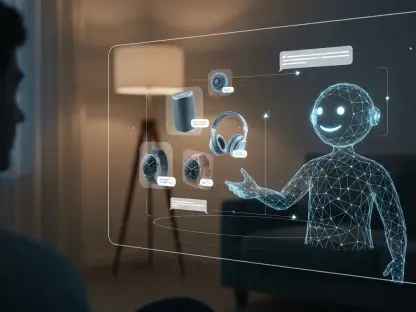Dana Chisnell’s tenure as the first executive director for customer experience (CX) at the Department of Homeland Security (DHS) marked a significant shift in the agency’s approach to interacting with the public. Beginning in August 2022 and concluding in March 2025, Chisnell’s time at DHS focused on enhancing public interactions by institutionalizing human-centered service design across the agency, the third largest federal organization. Her efforts aimed to drive a culture change within DHS, leaving a lasting impact on how the department serves the public.
Promoting Human-Centered Design
Chisnell’s mission to drive cultural change within DHS involved extensive training initiatives, reaching over 24,000 personnel in human-centered design by the end of 2024. These training programs aimed to increase awareness and understanding of how such designs can improve government services, ultimately simplifying their implementation. The focus was on developing empathy and a user-centered mindset among DHS employees, which would in turn create more efficient and effective interactions with the public.
By equipping DHS staff with the tools and knowledge to apply human-centered design principles, Chisnell fostered a more responsive and adaptive organizational culture. This shift encouraged employees to place the needs and experiences of the public at the forefront of their duties. The training initiatives were an essential foundation for the broader changes Chisnell sought to institute within the department, empowering staff to innovate and streamline services for better public engagement.
Establishing a Customer Experience Office
One of Chisnell’s notable achievements was the establishment of a permanent customer experience office in 2023. This office served as a dedicated unit concentrating on improving the efficiency and effectiveness of DHS services. Its main objective was to reduce the time and complexity involved in completing necessary paperwork and administrative tasks, making it easier for the public to interact with the agency. This initiative was a breakthrough in reducing bureaucratic red tape and enhancing the overall customer experience.
The customer experience office was instrumental in implementing practical changes, such as simplifying forms, streamlining processes, and leveraging technology to improve service delivery. These efforts not only made it easier for citizens to engage with DHS but also boosted the department’s operational efficiency. By focusing on the elimination of bottlenecks and improving service accessibility, the office played a crucial role in advancing Chisnell’s vision of a more human-centered DHS.
Legacy of Leadership and Innovation
Prior to her groundbreaking work at DHS, Chisnell was a founding member of the White House’s U.S. Digital Service (USDS), serving from February 2021 to August 2022. USDS was created in response to the Healthcare.gov crash to provide technical assistance to federal agencies. During her tenure, she played a vital role in promoting innovative solutions and technical excellence within the federal government. Her experience and expertise from USDS significantly informed her approach and initiatives at DHS.
Chisnell’s leadership extended beyond administrative and technical improvements. By advocating for a human-centered approach, she transformed the department’s service culture, making empathy and public-centricity critical components of daily operations. Her tenure at DHS was marked by an unwavering commitment to modernizing and humanizing the department’s services, ensuring that the changes she implemented would have a lasting impact.
Future Implications and Continued Progress
Dana Chisnell’s role as the inaugural executive director for customer experience (CX) at the Department of Homeland Security (DHS) represented a significant change in how the agency engages with the public. Serving from August 2022 to March 2025, Chisnell focused on improving how the DHS, the third largest federal entity, interacts with the public. Her mission was to embed human-centered service design throughout the department, significantly enhancing public interactions. She aimed to drive a cultural shift within the agency, ensuring that the changes she implemented would have a long-lasting impact on public service. The adoption of her human-centered approach was crucial in making services more accessible and user-friendly for the citizens. Her efforts were not just about short-term improvements, but about setting a new standard for how the DHS conducts its operations, ensuring that future interactions between the agency and the public would be more considerate and effective.









